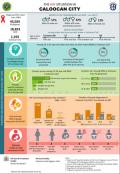What's New
Displaying results 1611 - 1620 of 4052
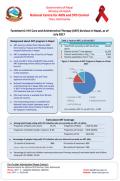
Resource | Fact Sheets,
Background about ART program in Nepal:
- ART service started from February 2004 from Sukraraj Tropical and infectious Disease Hospital, Kathmandu in Nepal.
- ART is available for free of cost for People Living with HIV (PLHIV).
- As of July 2017, there are 68 ART sites and 25 ART Dispensing Centers (ADCs) throughout the country.
- ADCs are established to increase accessibility to the treatment.
- Nepal has also adopted Test and Treat approach since Feb 2017.
- National Consolidated Guideline for Treating and Preventing HIV in Nepal 2014 and revised in 2017 is the guiding document for providing HIV treatment and care in Nepal.
- CD4 count service is available from 30 sites and across the country.
- Viral load testing service is available from National Public Health Laboratory
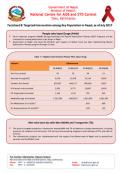
Resource | Fact Sheets,
HIV data and information on people who inject drugs (PWID), men who have sex with men (MSM) and transgender (TG), female sex workers (FSW) and their clients, children affected by AIDS (CABA) and prison inmates in Nepal.
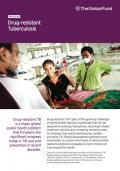
Resource | Publications,
Drug-resistant TB is part of the growing challenge of antimicrobial resistant superbugs that do not respond to existing medications, resulting in fewer treatment options and increasing mortality rates for illnesses that would ordinarily be curable — including TB. Global development partners must move faster to contain this threat of antimicrobial resistance before it escalates to claim millions of lives around the world.
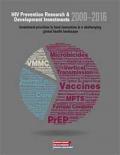
Resource | Publications,
In its 13th annual report, the Resource Tracking for HIV Prevention Research & Development Working Group ("Working Group") documents research and development spending for the calendar year 2016 and analyzes funding trends spanning 16 years.
Between 2000 and 2016, the Working Group has tracked over US$17 billion in investment towards biomedical HIV prevention research and development (R&D1) (Figure 1). The 2016 report analyzes over 600 donor-identified disbursements, as well as R&D spending trends for the following prevention options: AIDS vaccines, microbicides, pre-exposure prophylaxis (PrEP), treatment as prevention (TasP), medical male circumcision (VMMC), female condoms, prevention of vertical transmission (PMTCT) and HSV-2 vaccines. Cure research and therapeutic vaccine investments were also tracked as part of a comprehensive analysis of the HIV R&D landscape.
In a constantly evolving field, the Working Group estimates serve as a comparative cross-sectional and retrospective analysis of interventions, funding sources and strategies to evaluate the impact of public policies and to provide support for advocacy. This work also provides the transparency needed for funders, policy makers and HIV/AIDS advocates to best understand HIV prevention R&D investment flows and to generate strategies for the future.
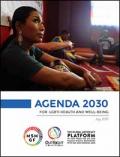
Resource | Publications,
This briefing paper illustrates how Sustainable Development Goal (SDG) 3, Ensure Healthy Lives and Promote Well-Being for All at All Ages, is relevant to the specific health needs of lesbian, gay, bisexual, transgender, and intersex (LGBTI) people. The paper highlights existing data pertinent to the health and well-being of LGBTI people across seven targets within this Goal, as well as relevant data gaps. The paper then makes a series of recommendations regarding what type of data and indicators Member States should report in order to effectively monitor progress on LGBTI health needs and ensure implementation of SDG 3 is truly universal and in line with the SDGs principle of "leave no one behind."
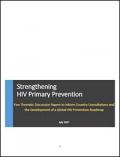
Resource | Publications,
In 2016, United Nations (UN) Member States committed to reducing the number of new adult HIV infections to fewer than 500 000 by 2020, a 75% reduction compared to 2010. Reducing the number of new HIV infections is also an indicator (3.3.1) in the Sustainable Development Goals, among which is the goal of ending the AIDS epidemic by 2030.
Global programmatic targets have been formulated also for primary prevention, underpinning the 75% reduction in new infections. That reduction is to be achieved by reaching 90% of young women and their male partners in high-incidence settings and 90% of key populations everywhere with combination prevention programmes by 2020, while continuing to scale-up HIV treatment.
The five thematic discussion papers in this collection were prepared by members of the Global Prevention Coalition Steering Group and other experts from various institutions and countries. Contributors are listed in alphabetical order. The five papers are meant to inform country consultations and the development of a Global HIV Prevention Roadmap.
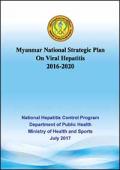
Resource | Publications,
Viral hepatitis is more prevalent in Asia than other regions. From the survey done among the general population in 2015 in Myanmar, the prevalence of hepatitis B was 6.5% and hepatitis C was 2.7%.
The 67th World Health Assembly in May 2014 approved a resolution to improve the prevention, diagnosis and treatment of viral hepatitis. In November 2014, Myanmar initiated the establishment of a National Hepatitis Control
Program (NHCP) following the resolution set up by the World Health Organization (WHO).
Myanmar is taking a public health approach to the treatment and care of viral hepatitis, treating not only mono-infected patients but also those co-infected with HIV, in line with the WHO’s strategic directions and the National Clinical Treatment Guidelines.
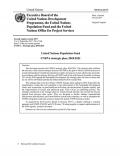
Resource | Guidelines,
This strategic plan is the first of three UNFPA strategic plans leading to 2030. It describes the transformative results that will contribute to the achievement of the Sustainable Development Goals, and, in particular, to good health and well-being, the advancement of gender equality, and the empowerment of women and adolescent girls, with a focus on eradicating poverty. The strategies introduced in the strategic plan are evidence-based and take into account the lessons learned from previous plan cycles.
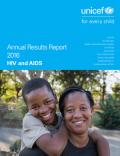
Resource | Publications,
The year 2016 represented a transition in many ways for the global HIV response. Some changes and developments were unequivocally positive, while the impact of others remains uncertain.
Significant gains were made in expanding access to and availability of services; coordinated, global action and attention; and efforts to develop and use innovative products and tools to address critical bottlenecks to effective HIV care.






